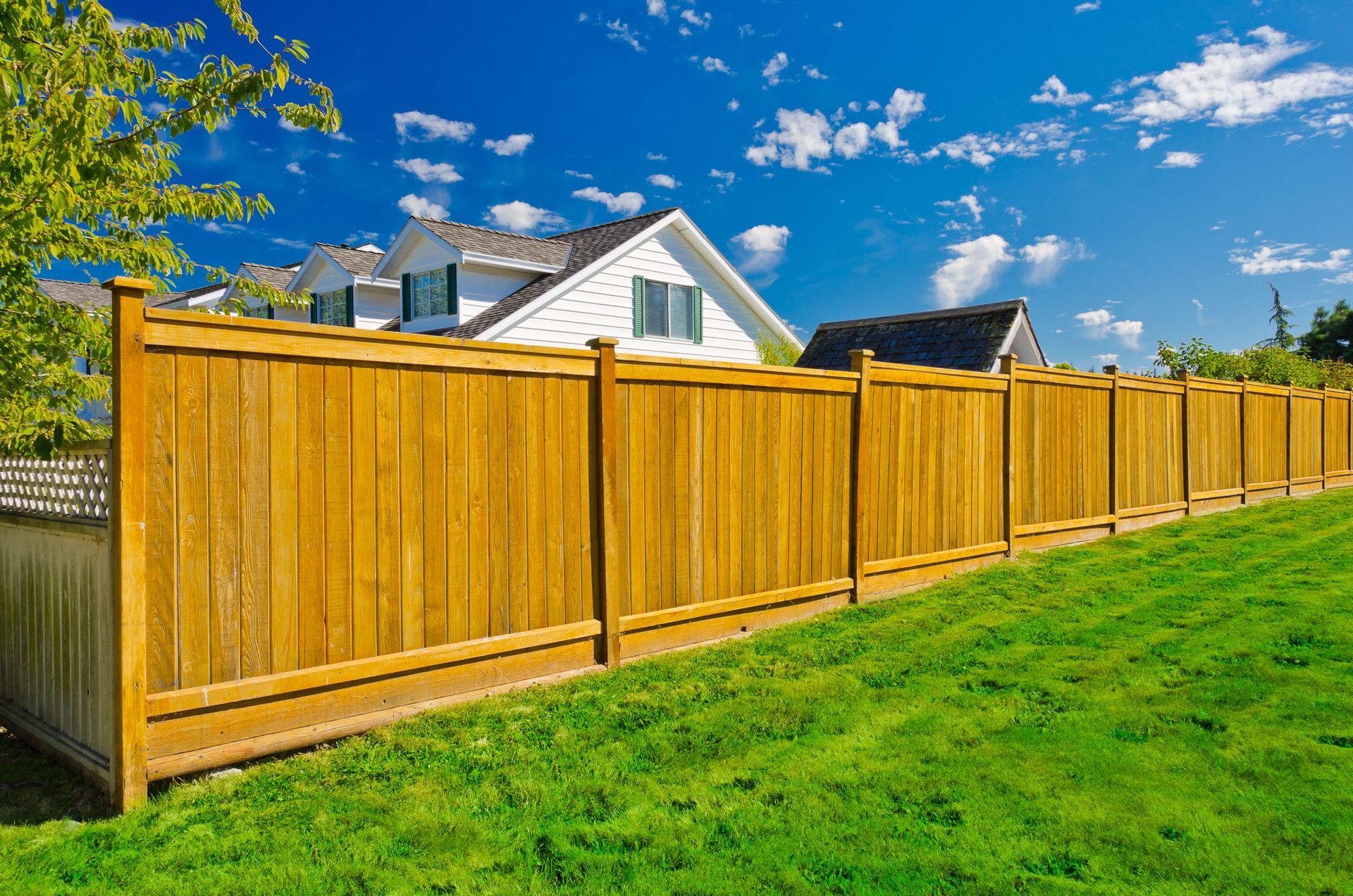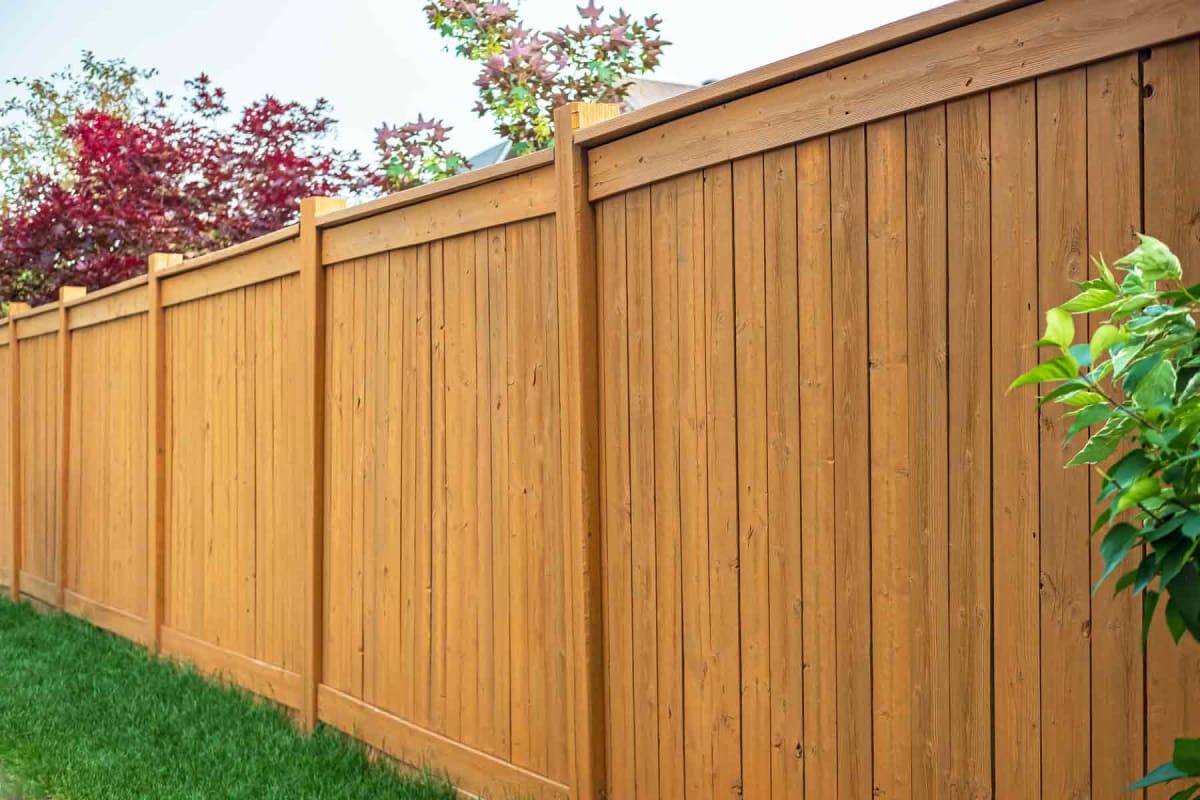All Categories
Featured
When it concerns safeguarding and improving your building, picking the right secure fencing product is an important decision. With a variety of alternatives available, choosing the very best material for your demands calls for careful factor to consider of aspects such as protection, privacy, looks, budget plan, and long-lasting upkeep. Whether you are installing a fencing for your home or service, each product has its own set of downsides and benefits. In this comprehensive overview, we'll explore one of the most preferred fencing materials to help you make an informed option.
Benefits:
Natural aesthetic. High personalization (spots, paints) When built high), excellent privacy (. Relatively cost effective. Negative Aspects:
Calls for normal upkeep (paint or staining) Prone to weather damage, insects, and rot. Shorter life expectancy compared to various other products. Best For: House owners seeking a cozy, typical look with high customization potential.
Benefits:
![]()
Low maintenance (no painting or discoloration) Resistant to weather, rot, and insects. Lasting (can last as much as 30 years or more) Range of designs and shades. Drawbacks:
Preliminary cost can be greater than timber. Can damage or fracture in severe climate problems (such as heavy effect) Minimal customization (contrasted to wood) Best For: Organizations and house owners seeking a low-maintenance, sturdy, and resilient secure fencing solution.
Benefits:
Incredibly durable and protected. Reduced upkeep (specifically light weight aluminum) Aesthetic allure (specifically functioned iron) Great for high-security areas. Drawbacks:
Can be pricey (especially wrought iron and steel) Not as private (unless combined with other products) Can rust (iron and steel require safety finishes) Best For: Homeowners and companies that require extra protection, or those seeking a premium, timeless style.
Advantages:
Cost effective and very easy to install. Low maintenance. Gives secure limits. Ideal for huge buildings or pet enclosures. Downsides:
Offers limited privacy and visual appeal (unless integrated with slats or covers) Can be seen as unpleasant in particular settings. Prone to rust otherwise dealt with. Best For: Huge homes, safety and security fences, or areas where spending plan is a priority over aesthetics.
Advantages:
![]()
Low maintenance (no staining or securing required) Resistant to fading, rot, and pests. Strong and lasting. Visual allure comparable to timber. Disadvantages:
Greater first cost contrasted to wood. Limited personalization choices (contrasted to all-natural timber) Can come to be weak in extreme cool temperatures. Best For: Home owners that want the appearance of wood but with a more resilient and low-maintenance choice.
Advantages:
Very long lasting and protected. Low upkeep. Offers premium privacy and soundproofing. Adds value to your property. Downsides:
High preliminary expense. Labor-intensive installation. Restricted style variety (even more standard styles) Best For: Premium properties or companies needing a durable, protected, and stylish fencing.
Benefits:
Renewable and ecologically friendly. Special and aesthetically pleasing. Very easy and lightweight to install. Can be used as a decorative element. Downsides:
![]()
Prone to weathering and damages in time (unless treated) Requires regular maintenance to avoid decomposing or splitting. Less safe and secure than steel, timber, or stone. Best For: Eco-conscious homeowners searching for a trendy and natural fence service.
Exactly How to Choose the Right Product. When selecting the very best fencing material for your home, take into consideration the list below factors:
Spending plan: Some materials like wood and chain link are extra inexpensive, while others, like rock and wrought iron, are extra pricey. Maintenance: If you're searching for a low-maintenance alternative, vinyl, steel, or composite materials are exceptional choices. Purpose: Take into consideration whether your key need is safety and security, privacy, or aesthetics. For chain, metal or safety and security web link fencings may be best, while wood or vinyl may fit those looking for privacy. Visual Preferences: The product you select must enhance the layout and design of your property. Wood offers a rustic appeal, while steel and rock provide an even more modern or official look. Toughness: Some products, like plastic and steel, deal lasting sturdiness, while others, like timber, might call for even more upkeep with time. Conclusion. Selecting the appropriate secure fencing material is a crucial choice that affects your property's security, privacy, and aesthetic allure. With a selection of alternatives readily available, from natural timber to low-maintenance plastic and durable steel, it is necessary to consider each material's downsides and advantages based upon your specific needs and choices. Whether you are looking for a decorative enhancement or a practical border, this overview will help you make the best choice for your home.
- Wood Fence. Wood fences are a functional and timeless option that provides all-natural elegance and privacy. They can be found in different designs, consisting of picket, privacy, and post-and-rail, making them versatile to different building kinds and preferences. Timber provides a conventional, rustic charm, suitable for domestic setups, and is easy to customize with paint or stains.
Benefits:
Natural aesthetic. High personalization (spots, paints) When built high), excellent privacy (. Relatively cost effective. Negative Aspects:
Calls for normal upkeep (paint or staining) Prone to weather damage, insects, and rot. Shorter life expectancy compared to various other products. Best For: House owners seeking a cozy, typical look with high customization potential.
- Vinyl (PVC) Secure Fencing. Vinyl fences are coming to be increasingly preferred as a result of their longevity and low upkeep demands. Made from synthetic products, plastic fencings are resistant to weather, bugs, and degeneration. They supply the look of timber but without the maintenance, making them a fantastic choice for both commercial and domestic properties.
Benefits:

Low maintenance (no painting or discoloration) Resistant to weather, rot, and insects. Lasting (can last as much as 30 years or more) Range of designs and shades. Drawbacks:
Preliminary cost can be greater than timber. Can damage or fracture in severe climate problems (such as heavy effect) Minimal customization (contrasted to wood) Best For: Organizations and house owners seeking a low-maintenance, sturdy, and resilient secure fencing solution.
- Metal Fence (Light Weight Aluminum, Steel, Wrought Iron) Metal fences are popular for their strength, protection, and classic sophistication. Aluminum and functioned iron fencings use an advanced, upscale appearance, usually used for attractive purposes, while steel fences are selected for their robust protection attributes.
Benefits:
Incredibly durable and protected. Reduced upkeep (specifically light weight aluminum) Aesthetic allure (specifically functioned iron) Great for high-security areas. Drawbacks:
Can be pricey (especially wrought iron and steel) Not as private (unless combined with other products) Can rust (iron and steel require safety finishes) Best For: Homeowners and companies that require extra protection, or those seeking a premium, timeless style.
- Chain Web Link Fence. Chain web link fencings are a functional and affordable choice, specifically for large buildings or areas needing basic, functional boundaries. They are widely used in both household and business setups and can be integrated with personal privacy slats for included seclusion.
Advantages:
Cost effective and very easy to install. Low maintenance. Gives secure limits. Ideal for huge buildings or pet enclosures. Downsides:
Offers limited privacy and visual appeal (unless integrated with slats or covers) Can be seen as unpleasant in particular settings. Prone to rust otherwise dealt with. Best For: Huge homes, safety and security fences, or areas where spending plan is a priority over aesthetics.
- Composite Fencing. Composite fencings incorporate wood fibers and plastic to produce a material that is both low and solid upkeep. They give the appearance of timber with the sturdiness of plastic and are readily available in various shades and appearances.
Advantages:

Low maintenance (no staining or securing required) Resistant to fading, rot, and pests. Strong and lasting. Visual allure comparable to timber. Disadvantages:
Greater first cost contrasted to wood. Limited personalization choices (contrasted to all-natural timber) Can come to be weak in extreme cool temperatures. Best For: Home owners that want the appearance of wood but with a more resilient and low-maintenance choice.
- Stone and Brick Fence. Rock and block fencings are outstanding for those seeking maximum toughness and a premium visual. These fencings supply unmatched security, privacy, and longevity, making them perfect for distinguished residential properties or business structures that need a robust obstacle.
Advantages:
Very long lasting and protected. Low upkeep. Offers premium privacy and soundproofing. Adds value to your property. Downsides:
High preliminary expense. Labor-intensive installation. Restricted style variety (even more standard styles) Best For: Premium properties or companies needing a durable, protected, and stylish fencing.
- Bamboo Fence. Bamboo is an environment-friendly alternative that offers a natural, rustic look while using modest protection and privacy. It's becoming a preferred for eco-conscious homeowners that like a more sustainable material.
Benefits:
Renewable and ecologically friendly. Special and aesthetically pleasing. Very easy and lightweight to install. Can be used as a decorative element. Downsides:

Prone to weathering and damages in time (unless treated) Requires regular maintenance to avoid decomposing or splitting. Less safe and secure than steel, timber, or stone. Best For: Eco-conscious homeowners searching for a trendy and natural fence service.
Exactly How to Choose the Right Product. When selecting the very best fencing material for your home, take into consideration the list below factors:
Spending plan: Some materials like wood and chain link are extra inexpensive, while others, like rock and wrought iron, are extra pricey. Maintenance: If you're searching for a low-maintenance alternative, vinyl, steel, or composite materials are exceptional choices. Purpose: Take into consideration whether your key need is safety and security, privacy, or aesthetics. For chain, metal or safety and security web link fencings may be best, while wood or vinyl may fit those looking for privacy. Visual Preferences: The product you select must enhance the layout and design of your property. Wood offers a rustic appeal, while steel and rock provide an even more modern or official look. Toughness: Some products, like plastic and steel, deal lasting sturdiness, while others, like timber, might call for even more upkeep with time. Conclusion. Selecting the appropriate secure fencing material is a crucial choice that affects your property's security, privacy, and aesthetic allure. With a selection of alternatives readily available, from natural timber to low-maintenance plastic and durable steel, it is necessary to consider each material's downsides and advantages based upon your specific needs and choices. Whether you are looking for a decorative enhancement or a practical border, this overview will help you make the best choice for your home.
Latest Posts
Trusted Auto Care for Every Make & Model: Your Complete Auto Solution in Montclare
Published Apr 19, 25
2 min read
Cost-Effective Car Services: Top-Quality Repairs at a Great Price
Published Apr 19, 25
2 min read
NAPA AutoCare: Professional Repairs Backed by the NAPA Standard
Published Apr 19, 25
2 min read
More
Latest Posts
Trusted Auto Care for Every Make & Model: Your Complete Auto Solution in Montclare
Published Apr 19, 25
2 min read
Cost-Effective Car Services: Top-Quality Repairs at a Great Price
Published Apr 19, 25
2 min read
NAPA AutoCare: Professional Repairs Backed by the NAPA Standard
Published Apr 19, 25
2 min read